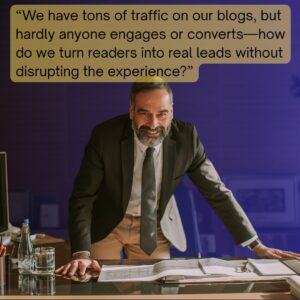Critical Thinking
-
Day 1 : What, Why & How3 Sessions|1 Quiz
-
Self & Peer Assessment1 Session|1 Quiz
-
Your Commitment1 Session|1 Quiz
-
Day 4 : Six Step Process1 Quiz
-
Day 5 : Step 1 - Find the Right Question2 Sessions|1 Quiz
-
Day 6 : Step 2 - Type of information needed1 Session|1 Quiz
-
Day 7 : Step 3 - How to collect the information1 Session|1 Quiz
-
Day 8 : Step 4 - How to interpret the information1 Session|1 Quiz
-
Day 9 : Step 5 - Arriving at a conclusion in an unbiased way1 Session|1 Quiz
-
Day 10 : Step 6 - How to apply the solution effectively1 Session|1 Quiz
-
Day 11 : Mid-course assimilation & feed back
-
Day 12 : Real life Examples2 Sessions
-
Day 13 : Habits to make Critical Thinking a part of your daily life(Habit 1)1 Quiz
-
Day 14 : Habit 21 Quiz
-
Day 15 : Habit 31 Quiz
-
Day 16 : Habit 41 Quiz
-
Day 17 : Habit 51 Quiz
-
Day 18 : Habit 61 Quiz
-
Day 19 : Habit 71 Quiz
-
Day 20 : Habit 81 Quiz
-
Day 21 : Summary2 Sessions|2 Quizzes
Session 1 : Why finding Right Question is important
[vc_row css=”.vc_custom_1516069665453{margin: 10px !important;background-color: #0098ba !important;border-radius: 15px !important;}”][vc_column][vc_column_text]
Why this step is important :
Imagine that now at this stage you come across multiple advertisements on different car brands & bike brands.
1) You are most likely to get impressed with an ad you liked and get biased towards that brand. But if you watch the ads after you decide what is it that you need exactly, you approach the situation with a clear view of what you’re actually trying to accomplish. It will equip you to go through the ads you watch critically and help you avoid creating ’emotional biases’.
2) It will also save your time of watching/studying multiple car or bike ads/manuals.
[/vc_column_text][/vc_column][/vc_row][vc_row css=”.vc_custom_1516069665453{margin: 10px !important;background-color: #0098ba !important;border-radius: 15px !important;}”][vc_column][vc_column_text]
In summary :
Finding right question to answer is important
1) To avoid creating ’emotional biases’.
2) To help you remove the clutter of over information and help you focus on RIGHT information which you should collate
[/vc_column_text][/vc_column][/vc_row][vc_row css=”.vc_custom_1516069665453{margin: 10px !important;background-color: #0098ba !important;border-radius: 15px !important;}”][vc_column][vc_column_text]
We will learn “How to do it” in the next session.
[/vc_column_text][/vc_column][/vc_row]








